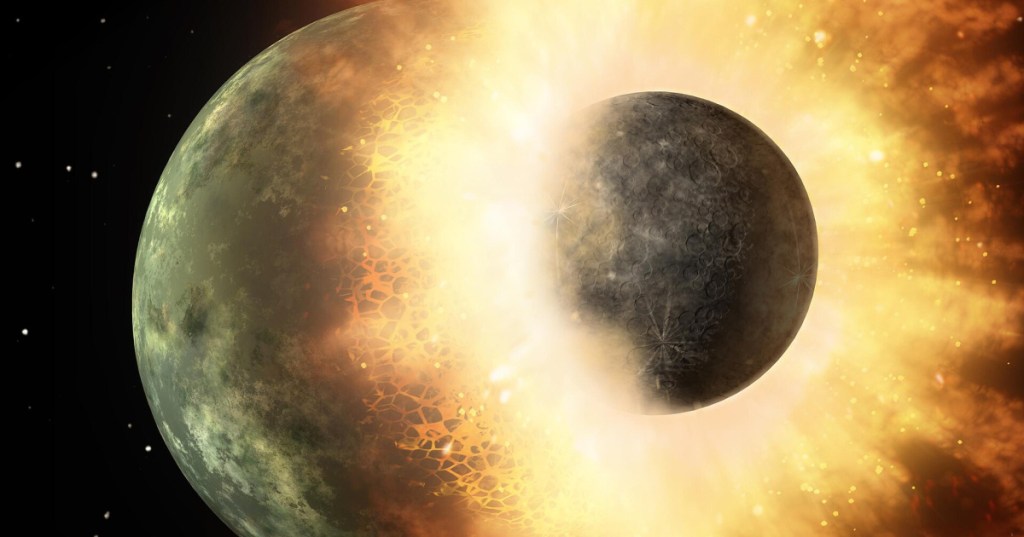The thing about science is that I don’t see how it will ever fail to surprise and delight – because one of the best things about being human is learning something new every day.
Now, they’re basically saying that aliens have been here longer than we have.
At least, in a sense.
It all happened (in theory) around 4.5 billion years ago. There was no moon, but all of that changed when a protoplanet around the size of Mars slammed into Earth.
The collision between Earth and “Theia” resulted in a huge amount of debris that eventually formed our very own moon.
Of course, not all researchers agree, and recently a team of scientists from the China Academy of Sciences says they’ve found evidence that supports a theory of their own.
They think that the bigger chunks of Theia were actually lodged deep inside our planet, and that there could be physical evidence to prove it.
In their paper, they detail how they analyzed two masses of matter (known as LLVPs, or large low-velocity provinces) below Africa and the Pacific Ocean. The authors claim to have ruin fluid dynamics simulations in order to learn about their origins.
Their theory is that when colliding with Theia, the upper half of Earth’s mantle would have melted. As a result, around 10% of Theia could have made its way toward Earth’s core.
Previously, simulations have suggested that traces of the alien planet would have melted into the Earth a long time ago.
The researchers say there’s a relatively simple way to decide who is right.
“In most of the Moon-forming impact simulations, most of the lunar materials come from the impactor, so we expect future missions can get lunar mantle rocks and compare that with the mantle blobs to see if they share the same chemical signatures. …If the lunar mantle rock and the LLVP-related basalts share the same chemical signatures, they should both originate from Theia.”
While some scientists are excited about what this could mean, others are remaining more skeptical until those additional evaluations are done.
Geodynamicist Maxim Ballmer is one of those who will reserve judgment.
“I don’t think the impactor material would be completely mixed, but the amount of mixing that has occurred is underestimated in this study.”
We’ll have to wait until those moon samples are collected to read the next chapter in this saga.
Unless the next big deal is scientists figuring out how to drill into the center of the earth.
If you think that’s impressive, check out this story about a “goldmine” of lithium that was found in the U.S. that could completely change the EV battery game.
